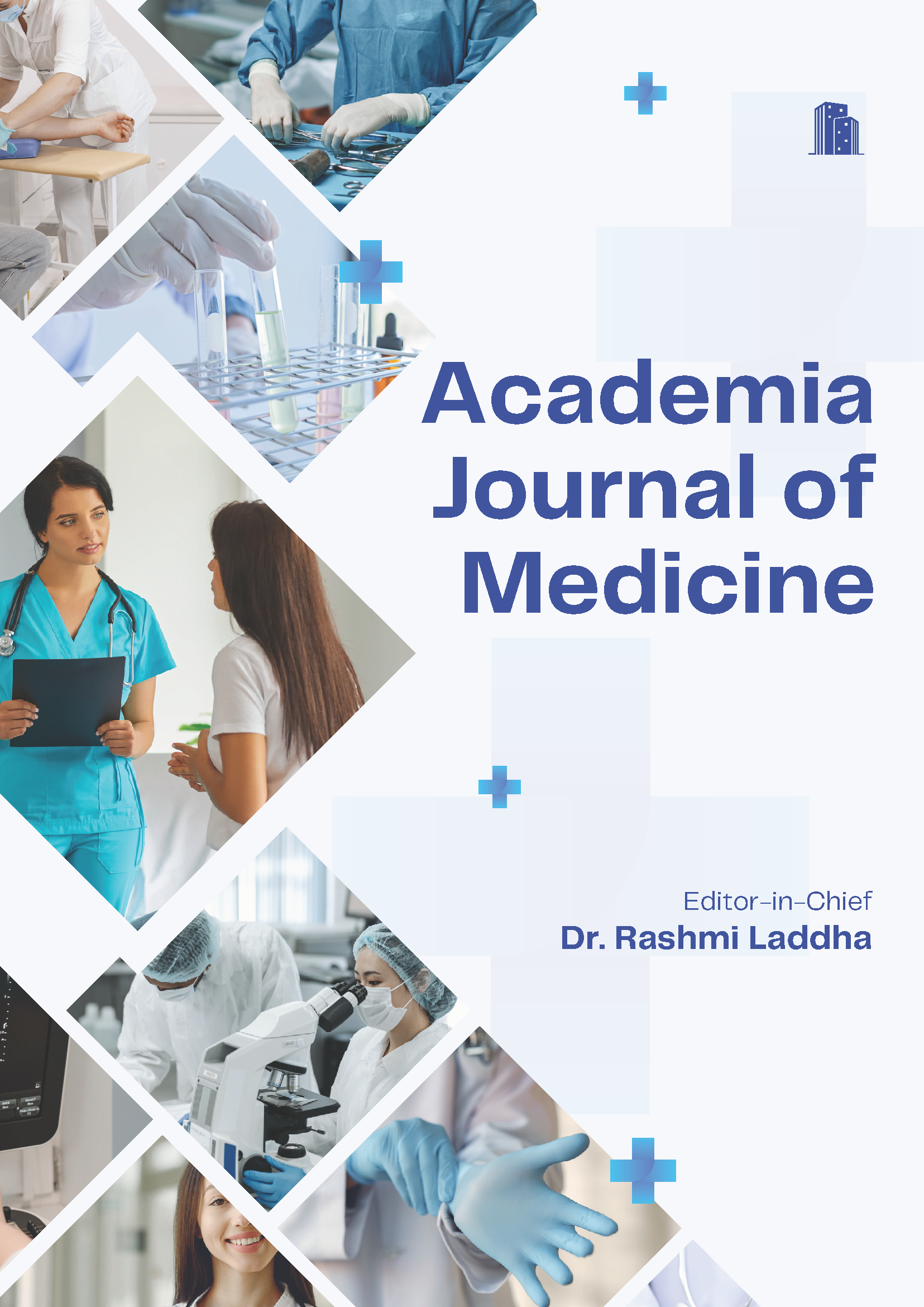Correlation between Vitamin D and HbA1c in Type 2 Diabetic Patients
Keywords:
HbA1c, Type 2 Diabetes Mellitus, Vitamin DAbstract
Background: Diabetes is a metabolic disorder that can affect nearly every organ system in the body. Recently, Vitamin D3 was given some importance worldwide in the pathogenesis of diabetes. The extraskeletal effects of Vitamin D3 have attracted considerable interest. The identification of 1,25-Dihydroxyvitamin D3 and 1-Alpha-Hydroylase expression in pancreatic Beta cells, in cells of the immune system,and in various other tissues besides the bone system , supports the role of Vitamin D3 in the pathogenesis of type 2 diabetes. Vitamin D3 deficiency appears to be related to development of diabetes mellitus type 2 and metabolic syndrome. The aim of the study is to find out whether this correlation between vitamin D and Diabetes is present or not. Mainly in this study we have tried to correlate Vitamin D with HbA1C levels in patients with Type 2 diabetes mellitus. Subjects and Methods: The present one and half years, cross sectional study was carried out in department of medicine, Darbhanga Medical College and Hospital, Darbhanga, Bihar from March – 2018 to September – 2019. A total of 125 patients with type 2 Diabetes Mellitus were studied. The estimation of vitamin D was done. Using Siemens, ADVIA centraurVit D assay a one pass 18 minute antibody competitive immunassay. Results: Maximum no. of cases was in the age group of 51 to 60 that is 40 patients (32%). The mean age of studied population was 60.22 +- 11.65 years. Out of 125 patients 77(61.6%) were males and 48 patients (38.4%) were females, with a ratio of male to female of 1.60:1. In 104 patients (83.2%), the level of vitamin D were below normal, in 11 patients (8.8%) the levels insufficient and in remaining 10 patients , the levels were either normal or more than normal. Conclusion: There was an inverse association between Vitamin D and HbA1C in patients with type -2 Diabetes Mellitus. Lower Vitamin D levels are associated with poor glycemic control. That means in case of low Vitamin D the study reveals high HbA1C. Vitamin D deficiency is prevalent in Diabetes mellitus Type 2 so by supplementation of vitamin D we can improve glycemic controls in patients of Diabetes mellitus Type 2. By improving glycemic control, we can reduce the complication of Diabetes.
Downloads
References
1. Parker J, Hashmi O, Dutton D, Mavrodaris A, Stranges S, Kandala NB, et al. Levels of vitamin D and cardiometabolic disorders: Systematic review and meta-analysis. Maturitas. 2010;65(3):225–236. Available from: https://dx.doi.org/10. 1016/j.maturitas.2009.12.013.
2. Tripathybb, Chandaliahb. Comparative Study of the Prevalence of Type-2 Diabetes Mellitus in Various Demographic Regions of Andhra Pradesh, India: a Population based Study. Int J MCH AIDS. 2016;5(2):103–111.
3. Stivelman E, Retnakaran R. Role of vitamin D in the pathophysiology and treatment of type 2 diabetes. Curr Diabetes Rev. 2012;8(1):42–47. Available from: https://dx.doi.
org/10.2174/157339912798829179.
4. Hotamisligil GS, Arner P, Caro JF, Atkinson RL, Spiegelman BM. Increased adipose tissue expression of tumor necrosis factor-alpha in human obesity and insulin resistance. J Clin Invest. 1995;95(5):2409–2415. Available from: https://dx.doi. org/10.1172/jci117936.
5. Schleithoff SS, Zittermann A, Tenderich G, Berthold HK, Stehle P, Koerfer R. Vitamin D supplementation improves cytokine profiles in patients with congestive heart failure: a double-blind, randomized, placebo-controlled trial. Am J Clin Nutr. 2006;83(4):754–759. Available from: https://dx.doi.org/ 10.1093/ajcn/83.4.754.
6. Pittas AG, Dawson-Hughes B. Vitamin D and diabetes. J Steroid Biochem Mol Biol. 2010;121(1-2):425–429. Available from: https://dx.doi.org/10.1016/j.jsbmb.2010.03.042.
7. Kayaniyil S, Vieth R, Retnakaran R, Knight JA, Qi Y, Gerstein HC, et al. Association of Vitamin D With Insulin Resistance and -Cell Dysfunction in Subjects at Risk for Type 2 Diabetes. Diabetes Care. 2010;33(6):1379–1381. Available from: https: //dx.doi.org/10.2337/dc09-2321.
8. Chiu KC, Chu A, Go VLW, Saad MF. Hypovitaminosis D is associated with insulin resistance and β cell dysfunction. Am J Clin Nutr. 2004;79:820–825. Available from: https://dx.doi. org/10.1093/ajcn/79.5.820.
9. Vacek JL, Vanga SR, Good M, Lai SM, Lakkireddy D, Howard PA. Vitamin D Deficiency and Supplementation and Relation to Cardiovascular Health. Am J Cardiol. 2012;109(3):359–363. Available from: https://dx.doi.org/10.1016/j.amjcard.2011.09. 020.
10. Baynes KCR, Boucher BJ, Feskens EJM, Kromhout D. Vitamin D, glucose tolerance and insulinaemia in elderly men. Diabetologia. 1997;40(3):344–347. Available from: https://dx. doi.org/10.1007/s001250050685.
11. Dalgard C, Petersen MS, Weihe P, Grandjean P. Vitamin D Status in Relation to Glucose Metabolism and Type 2 Diabetes in Septuagenarians. Diabetes Care. 2011;34(6):1284–1288. Available from: https://dx.doi.org/10.2337/dc10-2084.
12. Ford ES, Ajani UA, Mcguire LC, Liu S. Concentration of serum vitamin D and metabolic syndrome among U.S adults. Diabetes Care. 2005;28(5):1228–1258.
13. Braun TR, Been LF, Blackett PR, Sangheria DK. Vitamin D deficiency and cardiometabolic risk in north Indian community with highly prevelant Type 2 Diabetes. J Diabetes Metab. 2012;3:100213–100213.
14. Shanthi B, Revathy C, Majulidevi AJ, Parameshwari PJ, Stephan T. Serum 25 (OH)D and type 2 diabetes mellitus. J Clin Diag Res. 2012;6(5):774–780.
15. Lu L, Yu Z, Pan A, Hu FB, Franco OH, Li H, et al. Plasma 25-Hydroxyvitamin D Concentration and Metabolic Syndrome Among Middle-Aged and Elderly Chinese Individuals. Dia betes Care. 2009;32(7):1278–1283. Available from: https://dx. doi.org/10.2337/dc09-0209.
16. Laway BA, Kotwal SK, Shah ZA. Pattern of 25 hydroxy vitamin D status in North Indian people with newly detected type 2 diabetes: A prospective case control study. Indian J Endocrinol Metab. 2014;18(5):726–730. Available from: https: //dx.doi.org/10.4103/2230-8210.139242.
